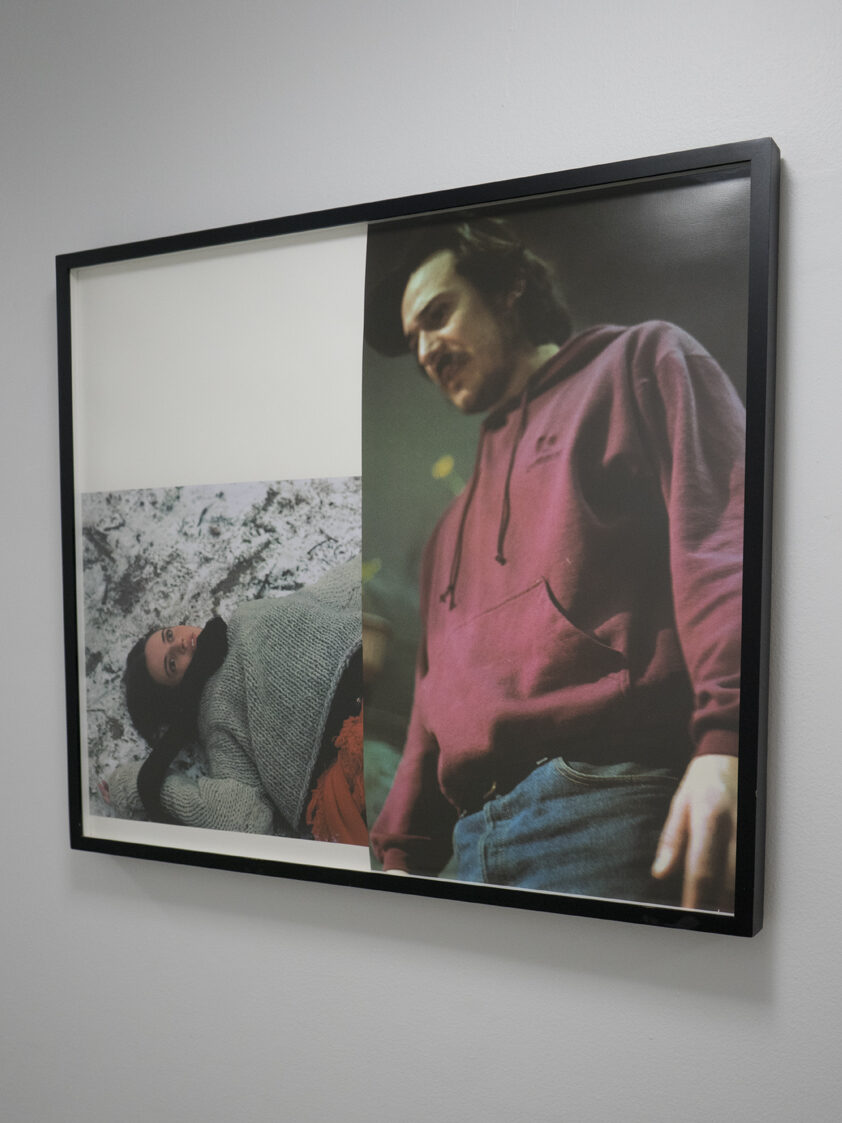
The photo collage of Sam Taylor Wood’s Red Snow, punctuates the end of a narrowing hall with a one-two punch in the gut. It always succeeds in making me look, making me feel sick, and making me angry. I feel as though I’m stumbling upon on a fresh murder scene in some seedy back alley…every time. Why am I forced to face this dead woman’s gaze and the creepy abuser’s rage-drained stance and glare? Unceremoniously juxtaposed, the two large photos depict a banal and random violence. What are these photos? Stills from some B-rated movie? Actors posing for the artist? This is staged, but the shock and disturbance is real, and I resent the coercion to look, especially in this setting. I have work to do here, and this invasive image short-circuits my train of thought.
The 4th floor of the 12th Street building already suffers from neglect. It is home to some of the shabbiest classrooms on campus. Its dingy white walls are made all the more institutional by the blue/white fluorescent lights. The walls gradually close in as you move down the corridor inducing a sense of demoralization and discomfort. When I am heading down to teach a class, I want to feel inspired, energized, and centered, not slapped in the face and kicked in the gut. Truly, the last thing I want in this place is to confront unwillingly a scene of brutality, tinged with an unsettling sense of mockery.
I can appreciate the power and impact of this work that so aptly captures the nature of violence and victimhood. However, I can’t fully attend to its content and composition because I’m too infuriated by its presence and placement on the hall. Perhaps that it’s just that I have to see it repeatedly. Given the shock of the image, one or two viewings would be enough to impress it on our minds—and would underscore the randomness of violence rather than making it routine.
Should disturbing images be hung in spaces that allow viewers more choice over whether to look and/or more distance for a response?
When does an image cease to be a provocative social statement and start to be a form of assault itself?
How can the placement of this type of art take into account the range of possible social functions of violent imagery?
Caitlin Morgan
Faculty, The New School for Public Engagement

